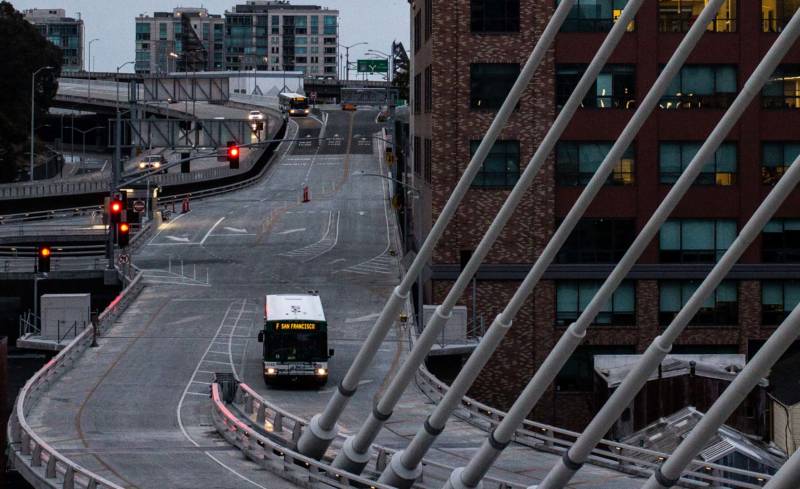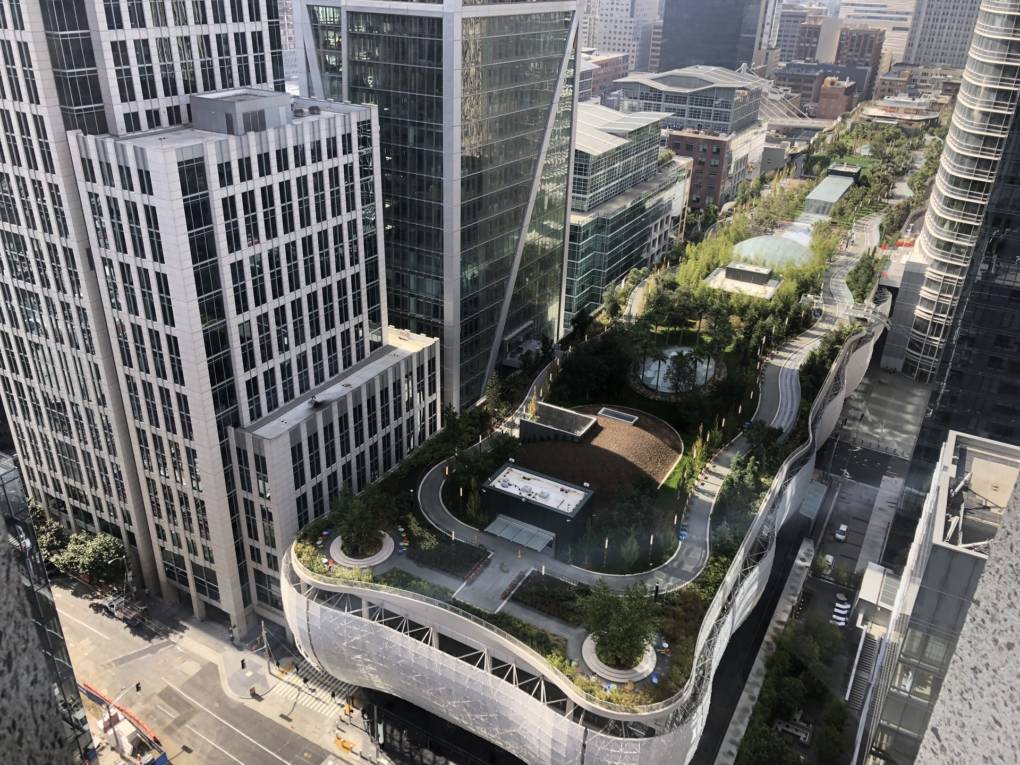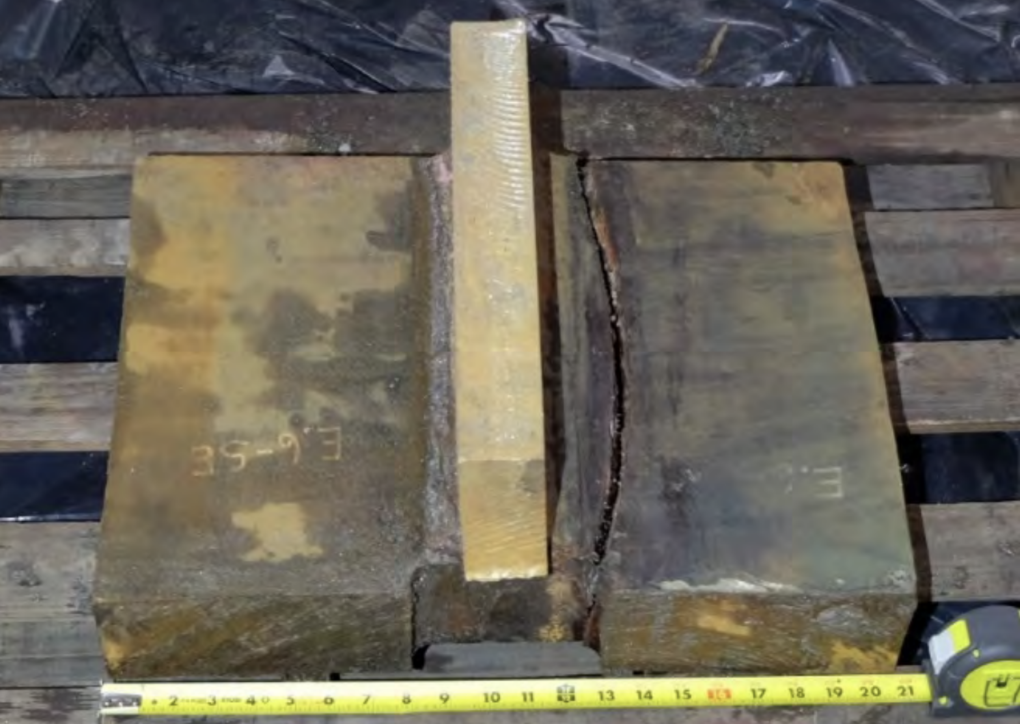"The last bus out on August 7, 2010, was an O bus at seven minutes after midnight," Peeples recalled last year. "I was on that one, too."
There was one hiccup in the plan that morning: The O was held up by heavy traffic because of an accident on the Nimitz Freeway. But it still arrived in time to be the first bus into the transit center, beating a run of the F bus from Berkeley by 5 minutes or so. A crowd of AC Transit officials and employees was on hand to cheer, pictures were snapped and everyone swarmed the coffee and pastries the agency had provided for the occasion.
Six weeks later, last Sept. 25, workers doing some finishing work on the center's bus deck discovered cracks in a massive girder supporting the facility's rooftop park.
That started a long process of investigation and repair — complete with a panel of engineering experts to consider what went wrong with the girder and study whether other parts of the $2.2 billion facility were vulnerable to a similar catastrophic failure.
That history was on Peeples' mind when he once again arrived at Fruitvale Station on Sunday morning to catch the 5 a.m. O bus. Like last year, that run was scheduled to be the very first into the reopened transit center.
"One of my colleagues reminded me this week that I did this last year — I came in on the first bus — and the Salesforce Transit Center broke," Peeples said. "And he wondered whether I wasn't maybe bad luck for the center. My take on it is that if it breaks again, I will never come back into the center."
But Peeples also said he feels reassured by the deliberate approach that the facility's owner, the Transbay Joint Powers Authority, had taken to repairing the fractured steel and addressing other potential issues in the building.
"I think there are a whole lot of people with very impressive resumes who sat on the expert panel, and they will be very embarrassed if it breaks again, so I think they’ve made sure that it won’t," he said.
If the freshly reopened transit center lives up to its name — if commuters can get in and out of the place with no untoward delays and maybe steal a few minutes at the beginning or end of the day to contemplate the steel-and-glass jungle that encircles the beautiful rooftop park — people will come to take it for granted.
B
ut of course, the facility is a work in progress. It was never intended to be just a bus station at any price tag, much less one that reads in the billions of dollars.
Last week's meeting of the Transbay Joint Powers Authority board heard a couple of presentations on what the agency calls "Phase 2" of the transit center project: extending rail service 1.3 miles across downtown from the current Caltrain terminal at 4th and Townsend streets to an underground complex beneath the center.
One presentation focused on how the project, called the Downtown Extension, or DTX, will be managed. The other came from the California High-Speed Rail Authority, which talked about how it has refined its plan to bring the bullet train into the Bay Area from the San Joaquin Valley. (Yes, high-speed rail is in a kind of limbo right now, mainly because of questions about funding. But planning continues.)
Serious discussions about the extension have gone on for decades — at least since the late 1980s — without rail service having gotten an inch closer to downtown.




